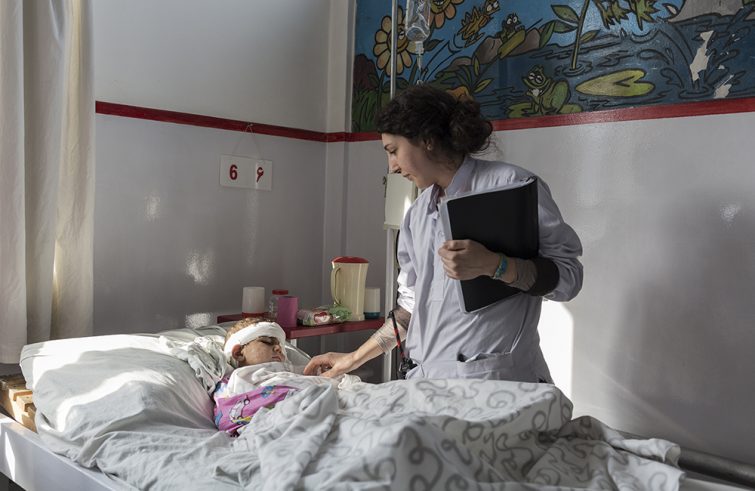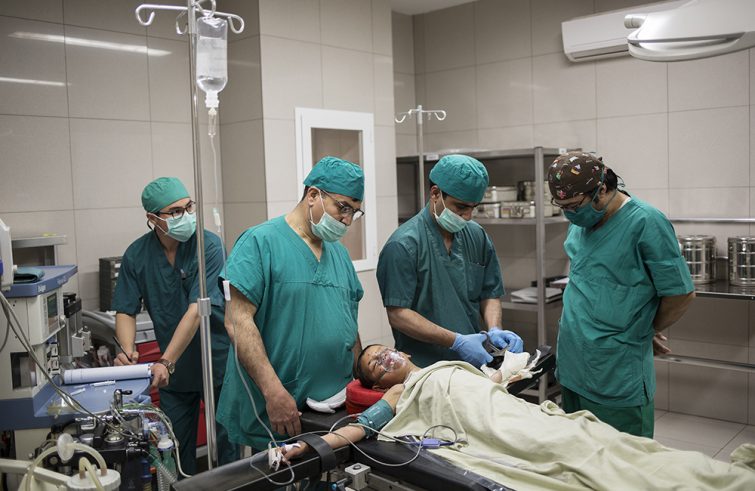
“Political issues must not prevail over the needs of the Afghan population. The situation is extremely critical, it’s rapidly becoming the world’s most serious humanitarian crisis” said Silvia Barlocco from the Emergency Hospital in Kabul. She is one of Emergency’s 1,400 employees working in three hospitals and 40 first-aid facilities in Afghanistan, eighty per cent of whom are Afghans, with foreign workers making up the rest.
 The situation in Afghanistan and the ongoing humanitarian crisis seen from the renowned war hospital in Kabul founded by Gino Strada in 1999, against the backdrop of a historical and political context spanning 40 years of warfare. Hence not only since the Taliban came to power in August 2021. Recent data published by the United Nations show that 24.4 million people, more than half the country’s population, will be in need of aid in 2022 ( 18 million the previous year). A dramatic aspect of the crisis is the rise in the number of children suffering from malnutrition to 3.9 million (700,000 more). The United Nations asked donors for $4.4 billion, the amount needed for the 2022 Humanitarian Response Plan.
The situation in Afghanistan and the ongoing humanitarian crisis seen from the renowned war hospital in Kabul founded by Gino Strada in 1999, against the backdrop of a historical and political context spanning 40 years of warfare. Hence not only since the Taliban came to power in August 2021. Recent data published by the United Nations show that 24.4 million people, more than half the country’s population, will be in need of aid in 2022 ( 18 million the previous year). A dramatic aspect of the crisis is the rise in the number of children suffering from malnutrition to 3.9 million (700,000 more). The United Nations asked donors for $4.4 billion, the amount needed for the 2022 Humanitarian Response Plan.
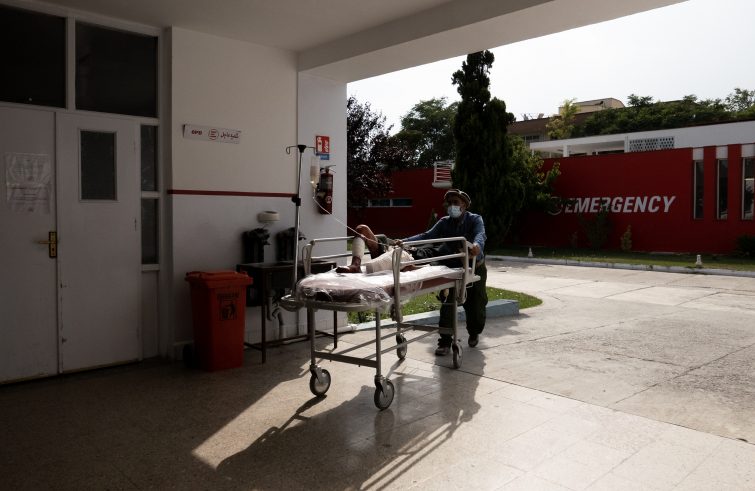 The humanitarian crisis was caused by a number of factors: the economic crisis due to the block on overseas funding, despite having been guaranteed to the previous government; spiralling commodity prices; drought, resulting in severe famine and food shortages in rural areas; restrictions on bank withdrawals, making it difficult to pay wages; mounting unemployment, especially among women; and an especially cold winter. In Kabul, temperatures drop to minus 10 degrees Celsius during the night.
The humanitarian crisis was caused by a number of factors: the economic crisis due to the block on overseas funding, despite having been guaranteed to the previous government; spiralling commodity prices; drought, resulting in severe famine and food shortages in rural areas; restrictions on bank withdrawals, making it difficult to pay wages; mounting unemployment, especially among women; and an especially cold winter. In Kabul, temperatures drop to minus 10 degrees Celsius during the night.
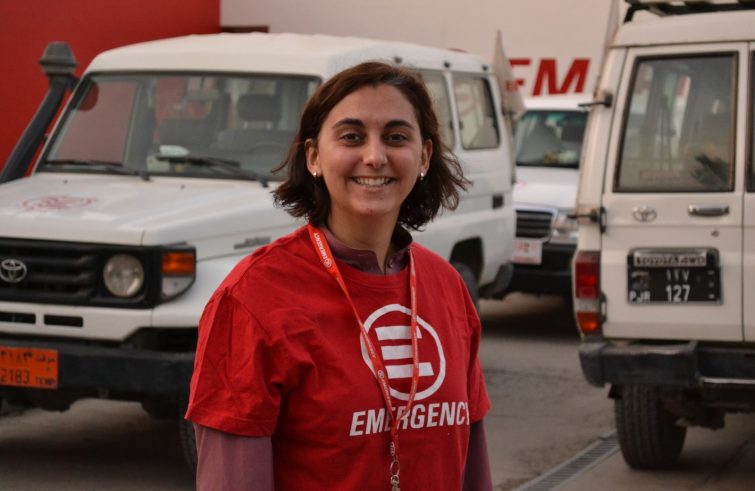 “All good”. And yet, when Afghans are asked how they are doing, they always answer: “All good”. Silvia Barlocco, in Kabul as Emergency Grant Manager for the past year, told SIR. “The city has turned into a ghost town” she says. “There are hardly any people in the street and very few cars, since they can’t afford to purchase fuel, which has become very expensive.
“All good”. And yet, when Afghans are asked how they are doing, they always answer: “All good”. Silvia Barlocco, in Kabul as Emergency Grant Manager for the past year, told SIR. “The city has turned into a ghost town” she says. “There are hardly any people in the street and very few cars, since they can’t afford to purchase fuel, which has become very expensive.
There are more people queuing up in front of humanitarian relief agencies distributing food and aids.
Those who were unable to leave during last summer’s large-scale evacuations hope to join relatives or friends abroad at some stage.
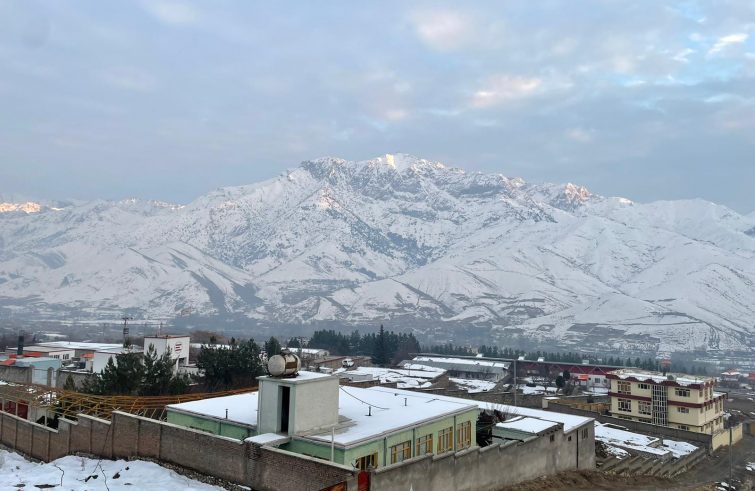 Humanitarian aid. “I hope the international community will ensure that political issues do not interfere with the delivery of aids to the local population”, said the aid worker. Despite logistical difficulties, humanitarian aid is reaching the area, provided by NGOs and large international organisations. The borders are open,” she says, “and although it may take longer, humanitarian flights and land transport can be arranged.
Humanitarian aid. “I hope the international community will ensure that political issues do not interfere with the delivery of aids to the local population”, said the aid worker. Despite logistical difficulties, humanitarian aid is reaching the area, provided by NGOs and large international organisations. The borders are open,” she says, “and although it may take longer, humanitarian flights and land transport can be arranged.
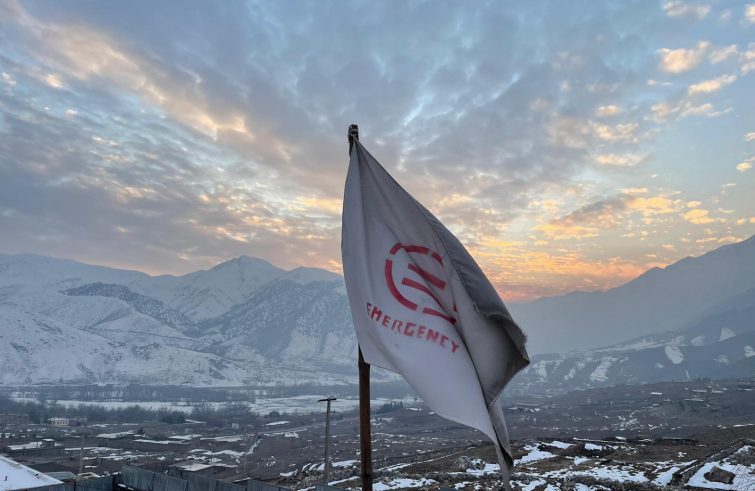 “Women here continue to work”. After the Taliban came to power, there were some difficulties with the import of medical supplies. But the situation eventually became stable and although the rise in food and fuel prices is detrimental to everyone, Emergency “has managed to pay the salaries of all its employees”. Moreover, their contribution to Afghanistan’s health and social system is proving to be so necessary that the new government has not placed major obstacles to the NGOs operating in the country. “Women here continue to work as before”, she pointed out.
“Women here continue to work”. After the Taliban came to power, there were some difficulties with the import of medical supplies. But the situation eventually became stable and although the rise in food and fuel prices is detrimental to everyone, Emergency “has managed to pay the salaries of all its employees”. Moreover, their contribution to Afghanistan’s health and social system is proving to be so necessary that the new government has not placed major obstacles to the NGOs operating in the country. “Women here continue to work as before”, she pointed out.
“But generally speaking, women and girls are being increasingly excluded from the labour market and higher education.”
 Many gunshot and landmine injuries. “Many people have been injured by firearms or land mines and explosive residues as a result of the circulation of weapons in the country for 20 years and due to the economic crisis causing high levels of criminality.” War surgery is practised in the hospitals of Kabul and Lashkar-Gah, while in the northern Panshir valley, Emergency runs a paediatric surgery and maternity clinic. Over 7.7 million patients have been treated since 1999. In 2021, 3,800 patients were hospitalised in the Kabul hospital with 5,000 treated in outpatient clinics. Following the military offensive in May, the hospital in Lashkar-Gah admitted 4,500 patients and treated over 10,500 people in the emergency room. As many as 5,400 babies were born in the maternity ward in Panshir and 45,000 were treated in the outpatient clinics.
Many gunshot and landmine injuries. “Many people have been injured by firearms or land mines and explosive residues as a result of the circulation of weapons in the country for 20 years and due to the economic crisis causing high levels of criminality.” War surgery is practised in the hospitals of Kabul and Lashkar-Gah, while in the northern Panshir valley, Emergency runs a paediatric surgery and maternity clinic. Over 7.7 million patients have been treated since 1999. In 2021, 3,800 patients were hospitalised in the Kabul hospital with 5,000 treated in outpatient clinics. Following the military offensive in May, the hospital in Lashkar-Gah admitted 4,500 patients and treated over 10,500 people in the emergency room. As many as 5,400 babies were born in the maternity ward in Panshir and 45,000 were treated in the outpatient clinics.
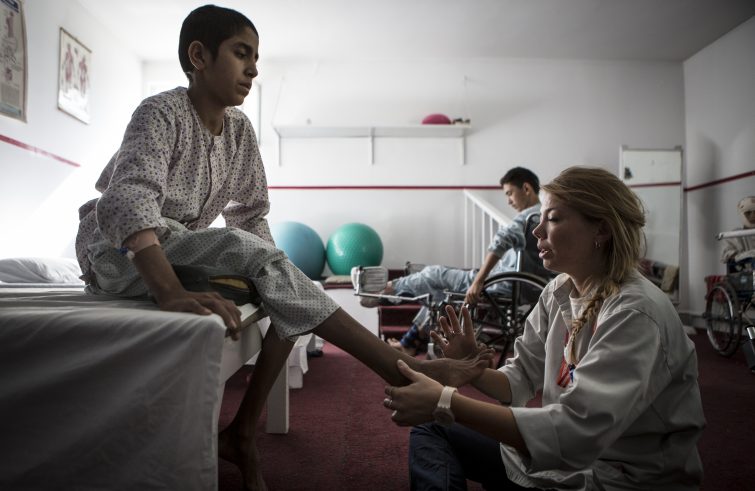 Surge in malnourished children. “These figures are higher compared to previous years as a result of the escalating conflict,” Barlocco confirms. 2021 has been a challenging year. Unfortunately, paediatric wards are seeing a surge in cases of malnourished children with serious complications.” According to the UN, two in three children in Afghanistan – more than 13 million – are in desperate need of life-saving support.
Surge in malnourished children. “These figures are higher compared to previous years as a result of the escalating conflict,” Barlocco confirms. 2021 has been a challenging year. Unfortunately, paediatric wards are seeing a surge in cases of malnourished children with serious complications.” According to the UN, two in three children in Afghanistan – more than 13 million – are in desperate need of life-saving support.

